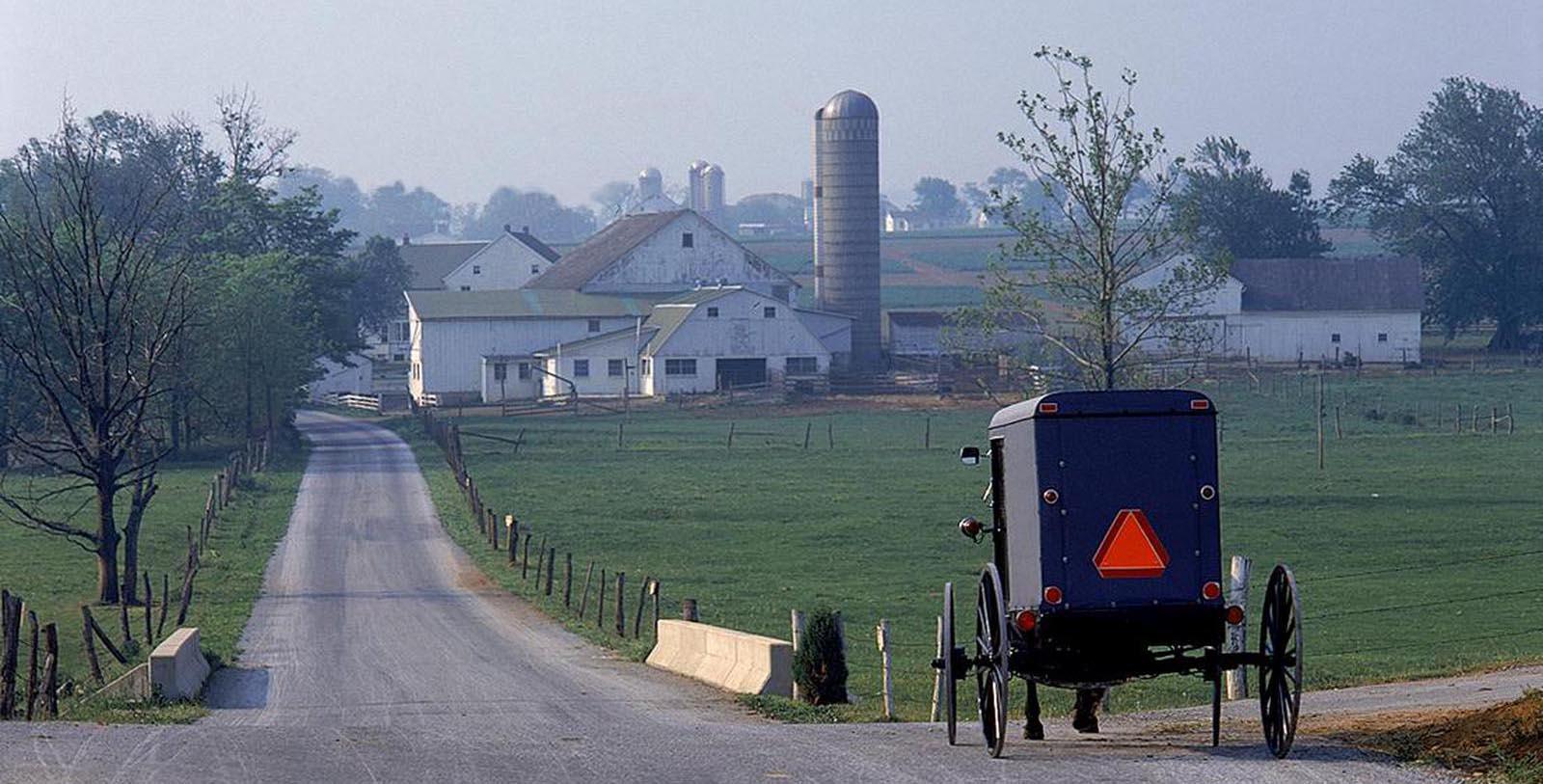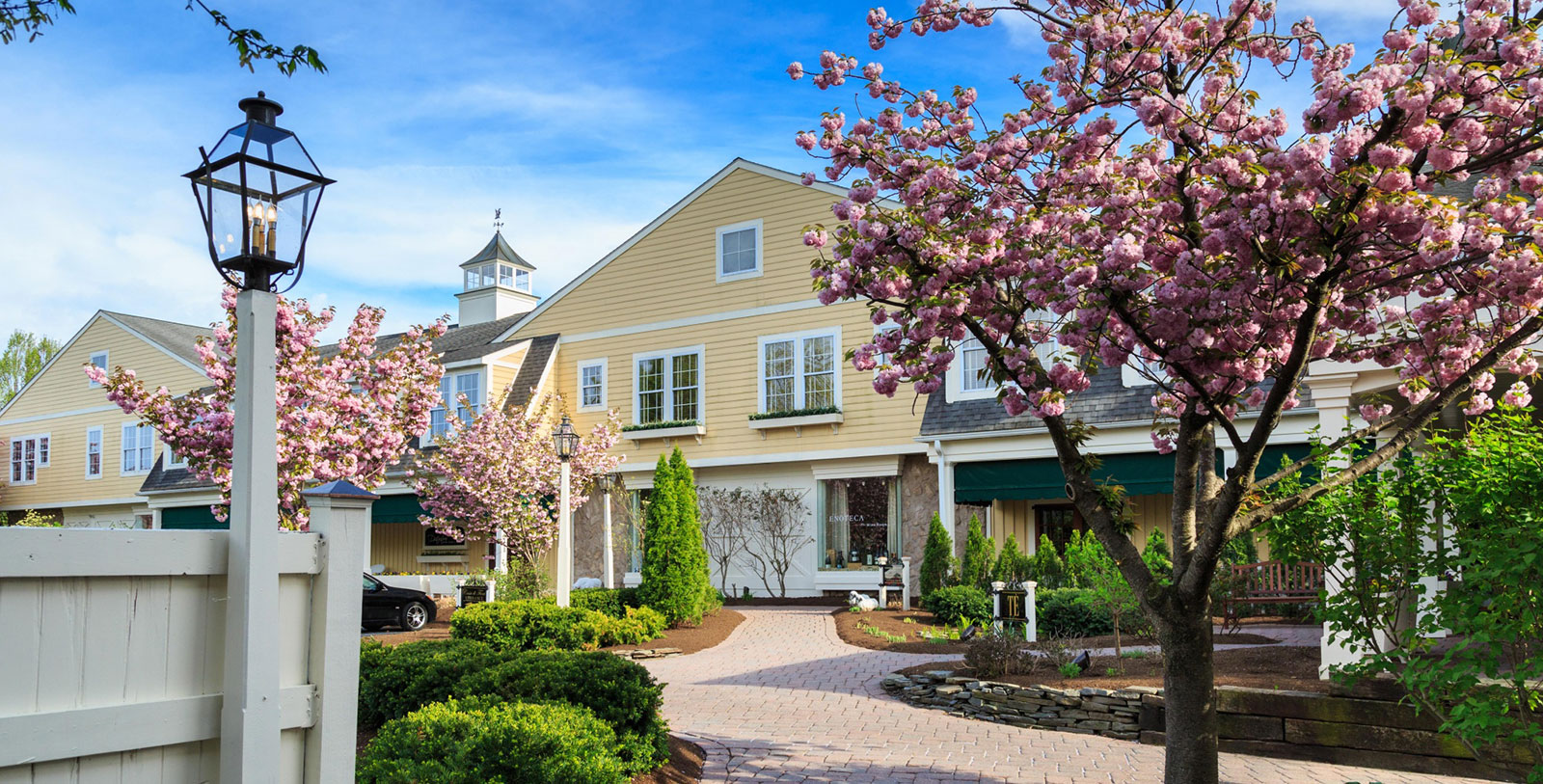Receive for Free - Discover & Explore eNewsletter monthly with advance notice of special offers, packages, and insider savings from 10% - 30% off Best Available Rates at selected hotels.
history
Once an Amish Tobacco farm, is today The Inn at Leola Village offering select lodging in beautifully antique homes, restored barns nestled amongst lavish gardens.
The Inn at Leola Village, Est. 1867, a member of Historic Hotels of America since 2001, dates back to 1867.
VIEW TIMELINEIn the aftermath of the American Revolution, Lancaster County, Pennsylvania, is defined by its dozens of quaint country villages and verdant homesteads. It also ranked as one of the most culturally diverse places to live in the whole country, filled with families hailing from places all across northwestern Europe. Among the most noticeable demographics in the county at the time were Swiss and German Mennonites of the Anabaptist tradition, who are known today as the “Amish.” The Amish were persecuted throughout Europe for their conservative interpretations of the New Testament and spent years hiding out within the mountains of the Alps. But the Amish eventually immigrated en masse to the “New World” upon learning of William Penn’s Pennsylvania and its promise of religious tolerance. Lancaster County became a hotbed for the Amish in America as such, who established a number of rural churches during the 1720s and 1730s. Over time, these small congregations grew into prosperous bucolic communities. Many Amish families abjured interacting frequently with the outside world, instead developed prosperous farms that endured for generations. They subsequently grew many unique agricultural products, ranging from vegetables to tobacco plants.
In fact, the buildings that would eventually become this incredible, Leola Village hotel, were a group of 19th-century farmhouses that cultivated tobacco for use in the cigar factories of nearby Lancaster City. The farm continued to produce tobacco for decades thereafter, until it became abandoned in the late 20th century. Real estate developers had actually begun to petition for its demolition when the buildings were finally saved in 2000. Caretakers began to thoroughly renovate the site, taking great pains to transform it into a wonderful boutique hotel called “The Inn at Leola Village, Est. 1867.” The work had nonetheless preserved original wood beams and corncob joints present inside each structure. The owners even endeavored to conserve as much of the inn’s Amish heritage by installing period furniture and handmade quilts into all of its 62 guestrooms. Today, The Inn at Leola Village, Est. 1867, has since emerged as one of the best Historic Hotels in Lancaster County, and is the only boutique hotel in Pennsylvania to receive the prestigious AAA's 4 Diamond Award for Hospitality and Excellence and Forbes Travel’s Four Star Award. A member of Historic Hotels of America since 2001, this spectacular historic inn truly offers a memorable cultural heritage experience in the heart of Amish country, PA.
-
About the Location +
As its name indicates, The Inn at Leola Village is located in the rustic Pennsylvania hamlet of Leola. Leola itself is one of the many communities that dot the historic landscape of Lancaster County, which has existed since the beginning of the 18th century. Of course, the area’s first inhabitants were various bands of Native Americans, such as the Shawnee, the Lenape, and the Nanticoke people. Among the most ubiquitous, though, were the Susquehanna, whom the earliest European colonists referred to as the “Conestoga.” (The name “Conestoga” is the English interpretation of the Susquehanna’s primary village in the area, “Gan'ochs'a'go'jat'ga.”) Nevertheless, as settlers from across the British Isles began extending into their land, the natives were slowly outnumbered until they constituted a very small minority of the local populace. Nearly all of the colonists had arrived from Chester County, one of the three royal counties that constituted the heart of colonial Pennsylvania in the early 1700s. In fact, the site of present-day Lancaster County was actually a part of Chester County at the time! Finding the older eastern half to be too densely populated, groups of English—and later Scot-Irish—settlers began founding their own communities on the county’s western fringes. Soon enough, Germans and other people from across northwestern Europe joined them, giving the county’s hinterland its own unique identity. Desiring to have direct control over local affairs, the new residents of western Chester County successfully petitioned the colonial government to form their own dominion called “Lancaster County” in 1729. (One of the local leaders, John Wright, named the new county after his hometown of Lancaster, England.)
Lancaster County was soon the most diverse community in the Thirteen Colonies, both in terms of economics and culture. The towns scattered about the county were a testimony to this diversity, as their names featured a wealth of dialects that included Welsh, Irish, English, German, and even American Indian. True to William Penn’s vision of Pennsylvania being a “holy experiment,” numerous Christian sects also founded their own churches in the area. While the Quakers were originally the most dominant, everyone from the Dunkers to the Moravians found a home in Lancaster County. Perhaps the best remembered were Swiss and German Mennonites of the Anabaptist tradition, who are popularly known toady as the “Amish.” Religious refugees from central Europe, the Amish flocked to Lancaster County during the 1720s and 1730s. And like many of their neighbors, they created massive farms and homesteads that produced a variety of agricultural products for sale. But within a matter of years, the widespread use of agriculture was accompanied by the debut of countless artisan shops within the surrounding towns. Lancaster County was soon the site of numerous tanneries, blacksmiths, foundries, markets, and other kinds of storefronts. A few of those local artisans even invented some of the most iconic American inventions inside their shops, such as the renowned Pennsylvania Long Rifle—otherwise known erroneously as the “Kentucky Long Rife”—and the durable Conestoga wagon. Lancaster County subsequently grew in political importance as such, serving as the gathering place for both the Pennsylvania General Assembly and the Continental Congress for a brief time during the American Revolution.
Once the conflict had subsided, Lancaster County reverted back to its prewar status as a quaint rural community. Nevertheless, the small artisan stores evenutally gave way to larger family-run factories over the following century. Among the first manufacturing operations to debut in Lancaster County were watchmaking shops, flour mills, and blast furnaces. But even those early manufacturing centers gradually evolved into towering industrial complexes. The new factories were quite intricate, producing an impressive array of domestic goods like textiles, cigars, corks, and confectionary. This transformation was spurred on by the improvement of the county’s infrastructure, epitomized by the arrival of the Columbia and Philadelphia Railroad in 1834. Thousands of new people subsequently relocated to Lancaster County, which gave birth to nearly 61 chartered settlements and countless other unincorporated villages, including Leola. Some of the most prominent people in the country were now living Lancaster County, too, such as U.S. Senator Simon Chase and the great U.S. Representative Thaddeus Stevens. Even the nation’s 15th president—James Buchanan—was a lifelong inhabitant of Lancaster City and owned a massive mansion located just outside of town called “Wheatfield.” Today, thousands of people from all over the country enjoy witnessing this amazing heritage for themselves, traveling to Lancaster County in droves every year. Among the most exciting cultural attractions that to encapsulate its stunning heritage include The Amish Farm, the Lancaster Central Market, and James Buchanan’s former estate. Truly few other places in America rival Lancaster County in terms of history and culture.
-
About the Architecture +
The Inn at Leola Village, Est. 1867, features a wonderful display of rustic architecture that reflects historic Amish design aesthetics. When the first generations of Amish settlers arrived in Pennsylvania during the early 18th century, they brought with them the rich architectural traditions that their ancestors had developed centuries before in northwestern Europe. As such, the patterns for the domestic buildings the Amish developed were almost always the same, although they used a variety of different building materials. The earliest known Amish structures featured mud or brick walls, as well as rudimentary straw roofs. But as the Amish became more established in Pennsylvania, they started to rely more on wood, tiles, and shingling. The farmhouses were often one story and contained two entrances that directly faced one another on opposite sides of the building. (Over time, the farmhouses evolved to feature a second story filled with bedrooms.) The two entrances were connected via a room that functioned as a main hallway, which led to additional rooms like the kitchen, parlor, and pantry. Amish families even reserved one of those spaces to serve as their own personal “church” every other Sunday. An attic resided above the main floor of the home, too, which the residents used to fill with grain and livestock feed. Outside, the main farmhouse was connected to the barn, either by way of a door or exterior hallway. Typically massive in size, the barn usually harbored separate bays for horses and cows. Additional spaces proliferated throughout the structure that stored such items like hay and straw. But more buildings surrounded the main complex, such as numerous sheds, a summer kitchen, and even a retirement home for older family members. Orchards and gardens filled out the remaining sections of the homestead, which were surrounded by acres of verdant farmland.































